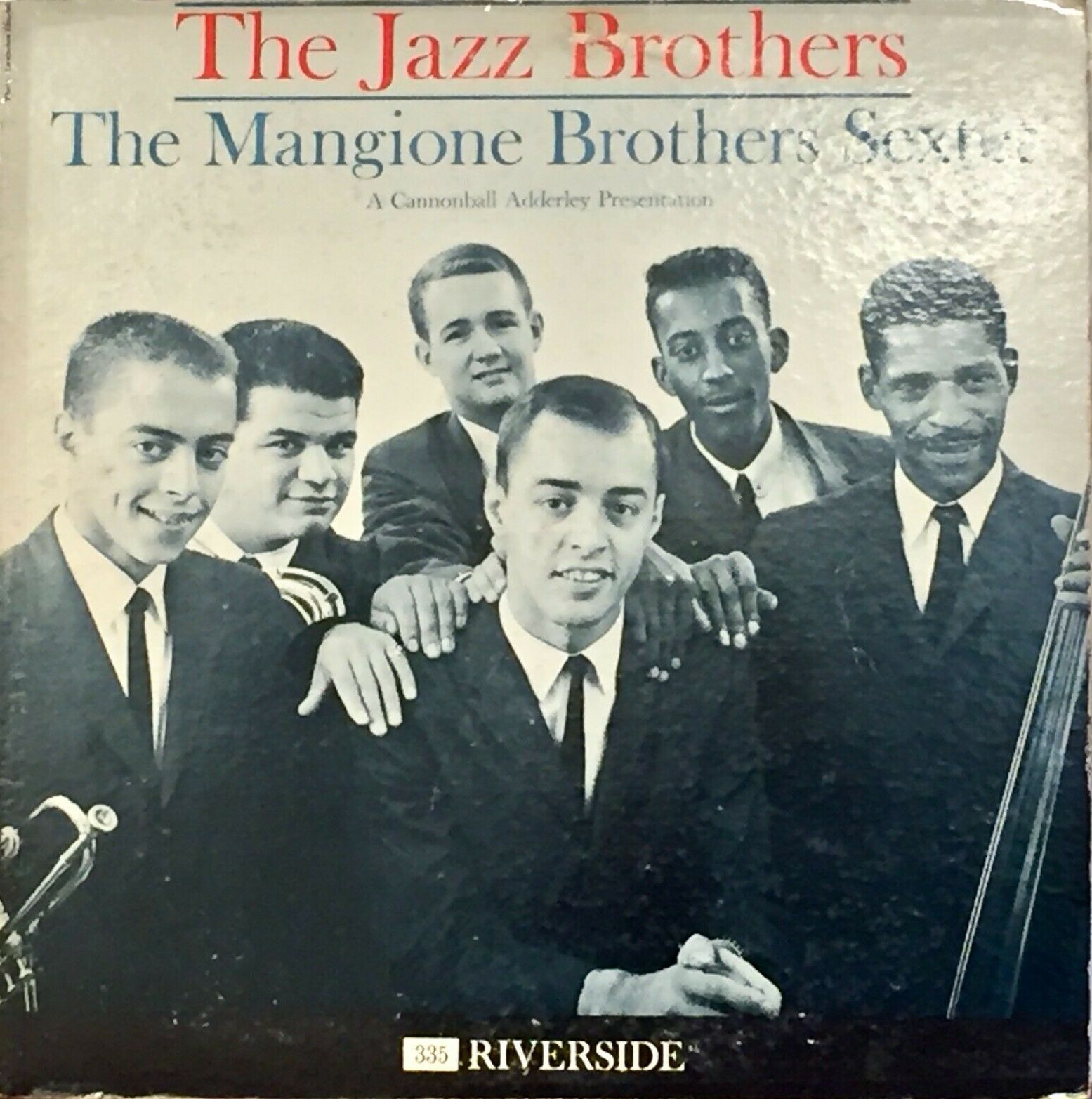Young lions rip and roar.
Personnel
Chuck Mangione (trumpet), Sal Nistico (tenor saxophone), Larry Combs (alto saxophone), Gap Mangione (piano), Bill Saunders (bass), Roy McCurdy (drums)
Recorded
on August 8, 1960 at Bell Sound Studios, NYC
Released
as RLP-335 in 1960
Track listing
Side A:
Something Different
Secret Love
Alice
Side B:
Struttin’ With Sandra
Nemesis
The Gap
The Girl Of My Dreams
Literally, the debut album by the sextet of Chuck and Gap Mangione is a family affair. But considering the enormous drive and zest of their band, it seems as if all six young guns have strong family ties. Their Cannonball Adderley-produced record showcases a tight-knit unit comfortably shifting gears in the lanes of its blues-drenched hard bop highway, while all concerned deliver strong, buoyant solos.
All concerned meaning: trumpeter Chuck Mangione, pianist Gap Mangione, tenor saxophonist Sal Nistico, alto saxophonist Larry Combs, bassist Bill Saunders and drummer Roy McCurdy, Chuck being the youngest at age 19, Gap two years older, Roy McCurdy the oldest at age 23. There’s nothing new under the sun, these gentlemen operate in the omnipresent mainstream format of the late 1950’s and early 1960’s but like Cannonball tackle blues, ballads and Songbook-based changes with gusto.
The Cannonball Adderley Quintet-coincidence is rather striking. It’s in the way that you use it and, in the slipstream of CAQ, hard bop is like a sparkling and shiny Ford Mustang in the hands of the Mangione outfit. Let me remind you as well that Cannonball would recruit the terribly swinging drummer Roy McCurdy in 1965, who would be a member of the quintet till the passing of his bandleader in 1975.
The Jazz Brothers doesn’t let up, maintaining high energy from the long bop line and fat shuffle of Nemesis, delicious and uplifting swingers Girl Of My Dream and Alice, ballad Secret Love and uptempo burner The Gap to the r&b-drenched stop-time affair Something Different. As we can see on the cover photo, The Mangione Sextet is an enthusiastic bunch. Take a good look at Gap, short-cropped hair, boyish grin, and Chuck, wider grin and the set of eyes of the sextet that mesmerized the photographer. The spikiest of crew-cuts. Back home in Rochester, New York, Chuck was taught by his mother to treat women with respect and he has learned with trial and error, having had plenty of flings already, that the core business of girls isn’t plain penetration. He plays sweetly and adds a tad of lemon, his lines of youth crack jokes to one another and reminisce about illegal entries into local jazz clubs, the overwhelming magic of brass, reed and pigskin bombs.
Sal Nistico is more heavy-set. Dark brows, South-Italian rugged aura, playful gaze. Could it be that The Jazz Brothers contains some of Nistico’s best statements on wax? He’s a solid-sounding boss, risk-taker and fire-eater. Him and the band clearly enjoyed an afternoon at Bell Sound Studios in New York City. Session in the pocket, picture taken, where to? Place to go, says McCurdy, is Jim & Andy’s. That’s where the big boys are. Might give Cannonball a ring. Stay put, I’ll hail a cab.







